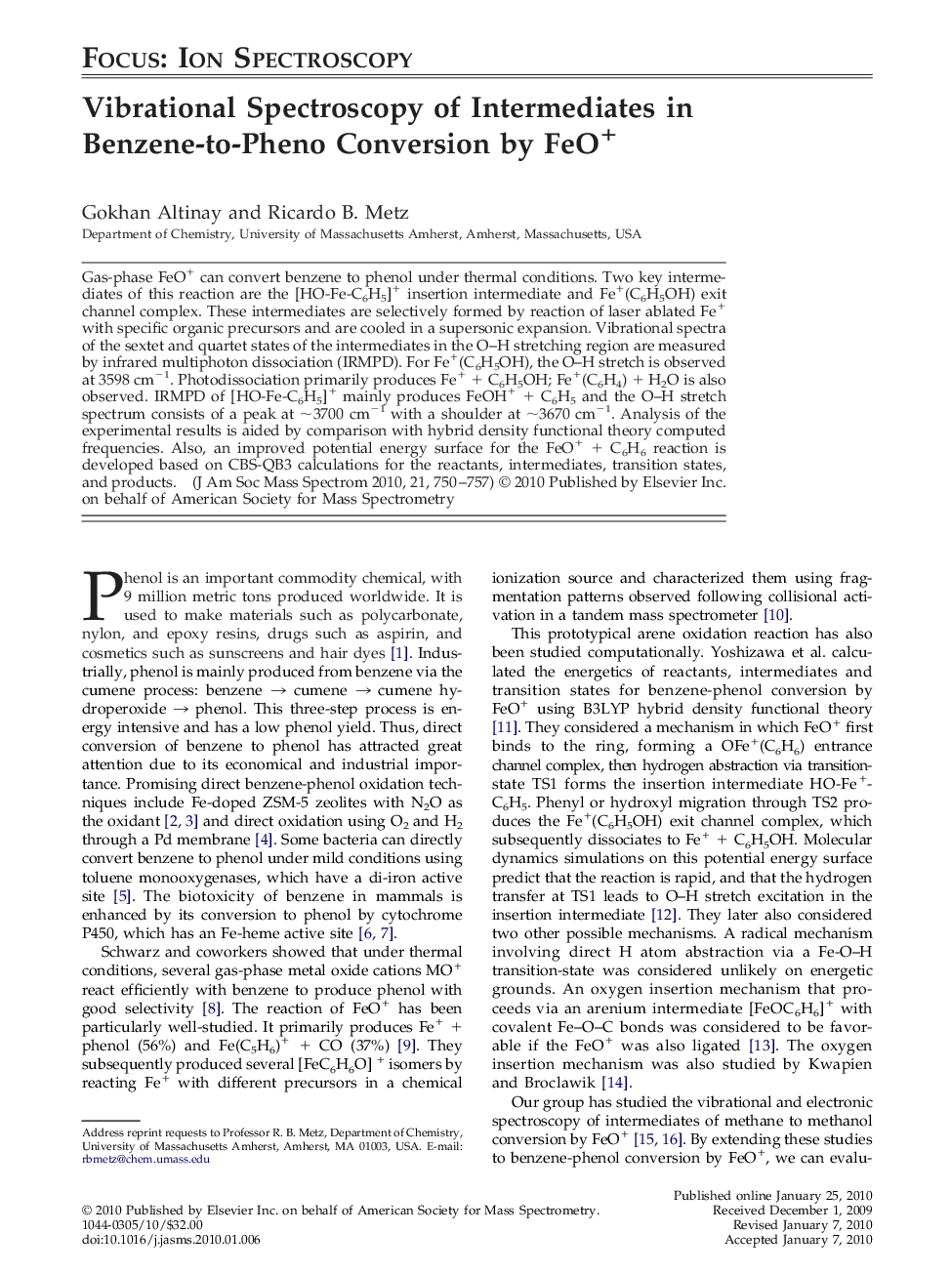| کد مقاله | کد نشریه | سال انتشار | مقاله انگلیسی | نسخه تمام متن |
|---|---|---|---|---|
| 1195136 | 964282 | 2010 | 8 صفحه PDF | دانلود رایگان |

Gas-phase FeO+ can convert benzene to phenol under thermal conditions. Two key intermediates of this reaction are the [HO-Fe-C6H5]+ insertion intermediate and Fe+(C6H5OH) exit channel complex. These intermediates are selectively formed by reaction of laser ablated Fe+ with specific organic precursors and are cooled in a supersonic expansion. Vibrational spectra of the sextet and quartet states of the intermediates in the O–H stretching region are measured by infrared multiphoton dissociation (IRMPD). For Fe+(C6H5OH), the O–H stretch is observed at 3598 cm−1. Photodissociation primarily produces Fe+ + C6H5OH; Fe+(C6H4) + H2O is also observed. IRMPD of [HO-Fe-C6H5]+ mainly produces FeOH+ + C6H5 and the O–H stretch spectrum consists of a peak at ∼3700 cm−1 with a shoulder at ∼3670 cm−1. Analysis of the experimental results is aided by comparison with hybrid density functional theory computed frequencies. Also, an improved potential energy surface for the FeO+ + C6H6 reaction is developed based on CBS-QB3 calculations for the reactants, intermediates, transition states, and products.
Graphical AbstractFeO+ converts benzene to phenol. Vibrational spectra of [HO-Fe-C6H5]+ and Fe+(C6H5OH) intermediates in the O–H stretching region are measured by IRMPD, monitoring Fe+ and FeOH+.Figure optionsDownload high-quality image (94 K)Download as PowerPoint slide
Journal: Journal of the American Society for Mass Spectrometry - Volume 21, Issue 5, May 2010, Pages 750–757